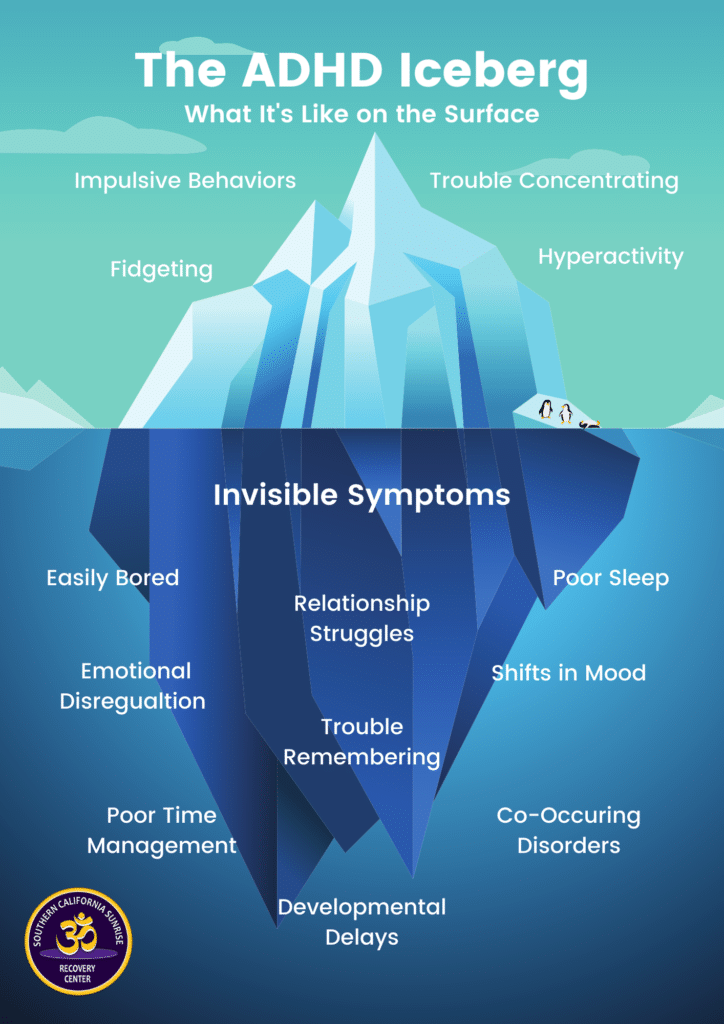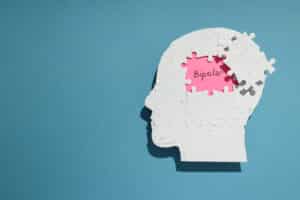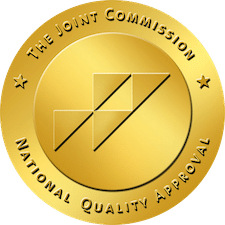Most people think of ADHD as a childhood disease. They picture a child in class who can’t sit still and acts out. However, this is one of the many misconceptions about ADHD. Mental health professionals talk about the ADHD iceberg. Learn more about ADHD and the ADHD iceberg.
What Is ADHD?
Attention deficit and hyperactivity disorder (ADHD) is a neurodevelopmental disorder that begins in childhood. It’s one of the most common disorders of this type recognized in children.
While it’s almost always first diagnosed in children, the disorder continues into adulthood. ADHD requires a medical diagnosis. The condition can be treated but not cured.
ADHD is most commonly seen as an inability to focus and concentrate, hyperactivity, and an inability to control impulses. This disorder causes disruptions in classrooms and creates lifelong challenges for the adult.
What Is the ADHD Iceberg?
The ADHD iceberg is a metaphor to help people understand ADHD better. An iceberg is dangerous because a person can only see 10 percent of it. The same is true of ADHD behaviors and struggles. The top of the ADHD iceberg includes:
- Poor impulse control
- Hyperactivity
- Trouble focusing on a specific task
However, a lot more goes on beneath these surface behaviors, such as:
- Delays in development
- Time blindness
- Problems in a traditional classroom setting
- Co-existing conditions
- Difficulty controlling emotions
- Skill deficits
All of these behaviors and symptoms need to be addressed.

Causes of ADHD
Scientists are studying ADHD to look for the causes and some risk factors. Much of the research points to a genetic factor for ADHD. There are also some risk factors that have been identified, including:
- Low birth weight
- Environmental factors exposure during early years or pregnancy
- Use of tobacco or alcohol during pregnancy
- Brain injury
- Premature delivery
Scientists continue to conduct research to isolate the causes of ADHD and specific risk factors.
Signs and Symptoms of ADHD
While many people picture a child or adult who can’t sit still or misbehaves in a structured environment, the signs and symptoms of ADHD vary from one case to the next. Some signs are obvious, and others are more subtle. Signs and symptoms to consider include:
- Frequently forgets or loses things
- Difficulties getting along with peers and authority figures
- Spends a lot of time daydreaming
- Trouble with the concept of taking turns
- Fidgets and squirms when asked to sit for an extended time period
- Takes unnecessary risks
- Careless mistakes
- Excessive talking
- Struggles to resist temptations
A person, who shows any of these signs and symptoms, needs to consult a doctor for an official diagnosis.
Executive Functioning & ADHD
Working memory, flexible thinking, and self-control are all components of executive function. These skills are essential for learning, working, and managing daily life. People who struggle with executive function often have difficulty adhering to directions, focusing, and handling emotions, among other things.
Examples of executive functioning skills include:
- Planning
- Problem-solving
- Self-motivation
- self-restraint or inhibition
- Self-awareness
- Working memory
- Emotional regulation
Executive dysfunction (or executive functioning disorder) may have a unique effect on people with ADHD.
Learning Disabilities
While ADHD isn’t a learning disability, it does make it difficult for a child to learn. To learn, a person must use the executive functions of the brain. These functions make it easy to focus, engage, remember, and pay attention. ADHD does have a negative effect on executive functions, making it more difficult to learn.
ADHD and Addiction
Articles in the National Library for Medicine reflect that a person with ADHD runs a higher risk of becoming addicted to alcohol or drug abuse. Many people, who struggle with addiction, have issues with acting impulsive, taking unnecessary risks, and displaying higher levels of anxiety. Most of these behaviors are signs of ADHD, which leaves a person with the disorder more likely to face addiction.
ADHD Treatment with SoCal Sunrise
The common treatments for ADHD include talk therapy, behavior modification, and medication. Depending on the patient’s age, the doctor might want to try therapy, working with both the child and parents. When the patient is an adult, the treatments include therapy to modify behavior and appropriate medications.
The first step for getting help is a diagnosis of ADHD from the person’s doctor. With that step completed, the doctor can make a referral to a mental health professional who can help with any therapy needed. If the situation becomes more serious, the patient might need a recovery center to help them overcome addiction or other mental health issues.
At Southern California Sunrise Recovery Center Mental Health, we offer treatments for people struggling with ADHD and other conditions, where the underlying disorder is ADHD. Reach out to us today for more information or to begin treatment.







